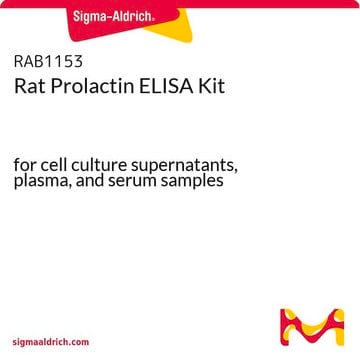L6520
Prolactin from sheep pituitary
20-50 IU/mg
Synonym(s):
LTH, Lactogenic hormone from ovine pituitary glands, Luteotropic Hormone, PRL
About This Item
Recommended Products
form
powder
specific activity
20-50 IU/mg
solubility
water: 7 mg/mL, clear to slightly hazy, colorless to faintly yellow
UniProt accession no.
shipped in
ambient
storage temp.
2-8°C
Gene Information
sheep ... PRL(443317)
Looking for similar products? Visit Product Comparison Guide
Biochem/physiol Actions
Signal Word
Danger
Hazard Statements
Precautionary Statements
Hazard Classifications
Repr. 1B
Storage Class Code
6.1D - Non-combustible acute toxic Cat.3 / toxic hazardous materials or hazardous materials causing chronic effects
WGK
WGK 3
Flash Point(F)
Not applicable
Flash Point(C)
Not applicable
Personal Protective Equipment
Certificates of Analysis (COA)
Search for Certificates of Analysis (COA) by entering the products Lot/Batch Number. Lot and Batch Numbers can be found on a product’s label following the words ‘Lot’ or ‘Batch’.
Already Own This Product?
Find documentation for the products that you have recently purchased in the Document Library.
Customers Also Viewed
Our team of scientists has experience in all areas of research including Life Science, Material Science, Chemical Synthesis, Chromatography, Analytical and many others.
Contact Technical Service









